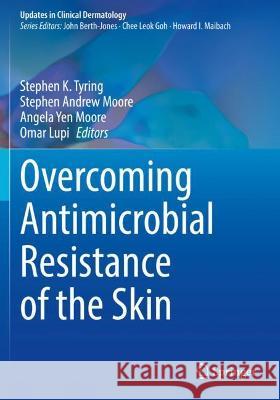Overcoming Antimicrobial Resistance of the Skin » książka
topmenu
Overcoming Antimicrobial Resistance of the Skin
ISBN-13: 9783030683238 / Angielski / Miękka / 2022
Overcoming Antimicrobial Resistance of the Skin
ISBN-13: 9783030683238 / Angielski / Miękka / 2022
cena 423,10 zł
(netto: 402,95 VAT: 5%)
Najniższa cena z 30 dni: 421,13 zł
(netto: 402,95 VAT: 5%)
Najniższa cena z 30 dni: 421,13 zł
Termin realizacji zamówienia:
ok. 20 dni roboczych.
ok. 20 dni roboczych.
Darmowa dostawa!
This book is a thorough, practical review of the challenges facing clinicians treating skin microbes and how to combat these therapeutic dilemmas. It expresses the critical public health concern of antimicrobial resistance and shows how microorganisms are developing the ability to halt the progress of antimicrobials like antibiotics, antivirals, and antifungals.
Chapters are grouped together in five sections for ease of use. The first three sections of the book convey foundational information on the mechanisms of antibiotics, antivirals, and antifungals resistance, as well as the implications of lack of vaccination. The fourth section then turns to the specifics of drug resistance for protozoan and helminth infections focusing primarily on initial and subsequent resistance to treatment. The book closes with a discussion on the potential solutions of innovative therapy including new delivery mechanisms, broad-spectrum antibiotics, phytocompounds, and biofilms. Chapters feature magnified, microscopic photos for identifying structures as they appear on the skin.
Part of the Updates in Clinical Dermatology series, Overcoming Antimicrobial Resistance of the Skin is an important resource relevant during the COVID-19 pandemic, and is written for all medical healthcare professionals.











